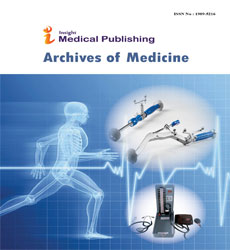Abstract
Anticoagulation for Atrial Fibrillation in the Elderly
Atrial fibrillation (AF) affects approximately 2.2 million patients in the United States (US). The median age of patients with AF is 75 years, with a prevalence of around 9% in the elderly [1]. In the US alone, it is projected that 5.6 million people will be diagnosed with non-valvular AF by 2050, of whom approximately 50% will be over 80 years of age [2]. The proportion of ischemic strokes attributable to AF rises significantly with age, from 1.5% in those aged 50-59 to 23.5% in those aged 80-89 [3]. Strokes in AF are associated with a higher mortality and disability than stroke from other causes [4]. Given the high prevalence of AF in the elderly, multiple comorbidities in many of these patients, and the greater risk of thromboembolism coupled with heightened concerns about bleeding, a specific review of the data and gaps in knowledge regarding anticoagulation for AF in older patients is in order.
Author(s): Deepika Narasimha, Anne B. Curtis
Abstract | Full-Text | PDF
Share this

Archives of Medicine peer review process verified at publons
Abstracted/Indexed in
- Google Scholar
- Genamics JournalSeek
- China National Knowledge Infrastructure (CNKI)
- Directory of Research Journal Indexing (DRJI)
- WorldCat
- Proquest Summons
- Publons
- Geneva Foundation for Medical Education and Research
- Secret Search Engine Labs
- Euro Pub
Open Access Journals
- Aquaculture & Veterinary Science
- Chemistry & Chemical Sciences
- Clinical Sciences
- Engineering
- General Science
- Genetics & Molecular Biology
- Health Care & Nursing
- Immunology & Microbiology
- Materials Science
- Mathematics & Physics
- Medical Sciences
- Neurology & Psychiatry
- Oncology & Cancer Science
- Pharmaceutical Sciences


